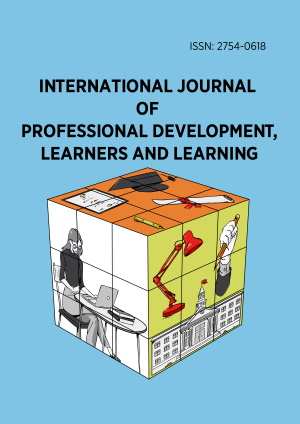Research Article
An Analysis of Pre-Service Mathematics Teachers’ Desmos Activities for Linear Programming Lesson
More Detail
1 Sampoerna University, INDONESIA2 Universitas Pendidikan Indonesia, INDONESIA* Corresponding Author
International Journal of Pedagogical Development and Lifelong Learning, 1(1), January 2020, ep2002, https://doi.org/10.30935/ijpdll/8312
Published: 03 June 2020
OPEN ACCESS 2987 Views 6299 Downloads
ABSTRACT
This qualitative study was aiming to analyze digital learning activities developed by pre-service mathematics teachers for linear programming lesson. The research participants were five pre-service teachers who assigned individually to develop learning activities for Linear Programming lesson by using Desmos Activity Builder. The analysis was conducted by adopting the Triple E framework, which measure how well the Desmos Activities are helping students engage in, enhance, and extend the lesson. It was found that all pre-service teachers have reached the green level of the Triple E Framework. Future improvement is needed, especially in the extension aspect. This study shows that there is potential to optimize pre-service mathematics teacher readiness to develop technology by providing opportunities for them to think about, design, experience, and reflect on how they can use technology for learning and teaching.
CITATION (APA)
TLS, D. S., & Herman, T. (2020). An Analysis of Pre-Service Mathematics Teachers’ Desmos Activities for Linear Programming Lesson. International Journal of Pedagogical Development and Lifelong Learning, 1(1), ep2002. https://doi.org/10.30935/ijpdll/8312
REFERENCES
- Association of Mathematics Teacher Educators’ Technology Committee. (2005). Draft position statement titled Preparing Teacher to Use Technology to Enhance the Learning of Mathematics.
- Brown, J. S., Collins, A. and Duguid, P. (1989). Situated cognition and the culture of learning. Educational Researcher, 18(1), 32-42. https://doi.org/10.3102%2F0013189X018001032
- Carpenter, T. P., Corbitt, M. K., Kepner, H. S., Lindquist, M. M., & Reys, R. E. (1981). National assessment. In E. Fennema (Ed.), Mathematics education research: Implications for the 80’s (pp. 22-38). Reston, VA: National Council of Teachers of Mathematics.
- Choy, D., Wong, A. F. L., & Gao, P. (2009). Student Teachers’ Intentions and Actions on Integrating Technology into Their Classrooms during Student Teachings. Journal of Research on Technology in Education, 42(2), 175-195. https://doi.org/10.1080/15391523.2009.10782546
- Danielson, C., & Meyer, D. (2016). Increased Participation and Conversation Using Networked Devices. Mathematics Teacher, 110(4). https://doi.org/10.5951/mathteacher.110.4.0258
- Ebert, D. (2014). Graphing Projects with Desmos. Mathematics Teacher, 108(5). https://doi.org/10.5951/mathteacher.108.5.0388
- Gulati, S. (2017). Desmos Activity Builder Create Your Own Interactive Activity. At Right Angle, 6(3). Retrieved from https://azimpremjiuniversity.edu.in/SitePages/resources-ara-november-2017-desmos-activity-builder.aspx
- International Society for Technology in Education. (2008). National educational technology standards for teachers. Retrieved from http://www.iste.org/standards/nets-for-teachers.aspx
- Jon Orr. (2017). Function Transformations and the Desmos Activity Builder. The Mathematics Teacher, 110(7), 549. https://doi.org/10.5951/mathteacher.110.7.0549
- King-Sears, M. (2009). Universal design for learning: Technology and pedagogy. Learning Disability Quarterly, 32(4), 199-201. https://doi.org/10.2307/27740372
- Lave, J. and Wenger, E. (1991). Situated learning: Legitimate peripheral participation. Cambridge: Cambridge University Press. https://doi.org/10.1017/CBO9780511815355
- National Council of Teachers of Mathematics (NCTM). (2000). NCTM Principles and standards for school mathematics. Reston, VA: Author.
- Wartella, E. (2015). Educational Apps. Psychological Science in the Public Interest, 16(1), 1-2. https://doi.org/10.1177/1529100615578662
- Roschelle, J., Shechtman, N., Tatar, D., Hegedus, S., Hopkins, B., Empson, S., Knudsen, J., & Gallagher, L. (2010). Integration of technology, curriculum, and professional development for advancing middle school mathematics: Three large-scale studies. American Educational Research Journal, 47(4), 833-878. https://doi.org/10.3102/0002831210367426
- Suh, J. M. (2010). Tech-Knowledgy and Diverse Learners. Mathematics Teaching in the Middle School, 15(8), 440-447. https://doi.org/10.2307/41183517
- Taylor, L. (2004). How student teachers develop their understanding of teaching using ICT. Journal of Education for Teaching, 30(1), 43-56. http://dx.doi.org/10.1080/0260747032000162307
- Learn Desmos: Activities. (n.d.). Retrieved from Desmos: https://learn.desmos.com/teacher-v1
- Triple E Framework. (n.d.). Retrieved from Triple E Framework: https://www.tripleeframework.com/

 The articles published in this journal are licensed under the CC-BY Creative Commons Attribution International License.
The articles published in this journal are licensed under the CC-BY Creative Commons Attribution International License.